Where Are the Ants Carrying All Those Leaves?
If you’ve ever visited the rainforest exhibit at the California Academy of Sciences in San Francisco, or walked in a real rainforest in Central or South America, you might have wondered what the ants do with all those leaf pieces they’re carrying like little parasols in a parade.
“A lot of people assume that they’re eating the leaves,” said Cal Academy assistant curator Kristen Natoli.
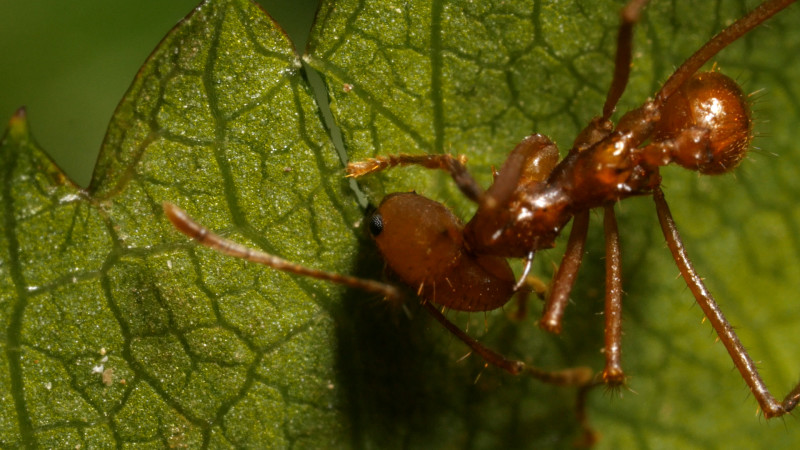
That assumption would be wrong. Though the ants drink the sap in the leaves for energy, they don’t eat them. Instead, they use the leaves to grow something else. These ants, known as leafcutters, are some of the world’s earliest and most competent farmers. They use those leaf pieces to feed a fungus that grows in white tufts in their nests. The fungus provides sustenance to the ants and their brood.
Cal Academy is planning to boost its leafcutter ants’ exhibit so that visitors have an easier time watching the tiny farmers at work. The ant colony is of the species Atta cephalotes – one of 50 leafcutter species in the Americas, the only region in the world where they’re found. It was brought to the Bay Area from Trinidad by Brian Fisher, chair of the Academy’s Department of Entomology. The ants currently carry leaf pieces inside a plastic tube about 8 feet long. The expanded exhibit will give visitors a better view and also make things more exciting for the ants. As it turns out, even ants need some excitement.
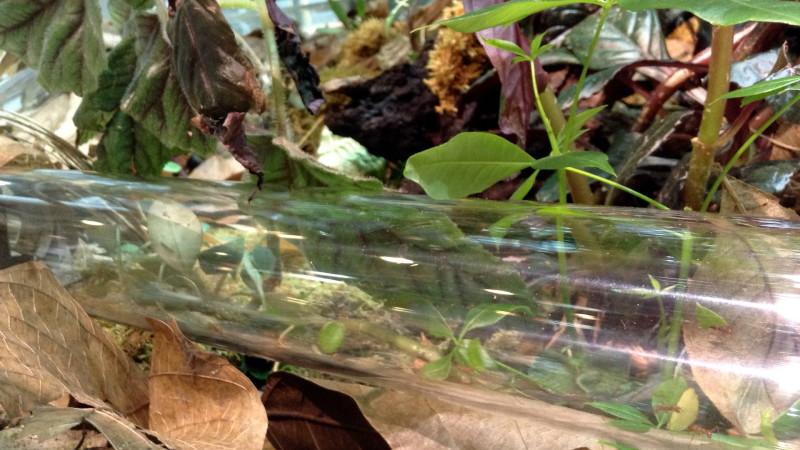
“In the open they’d be exploring the forest for new sources of leaf material, new spaces to open nest chambers,” said Natoli, who cares for the Cal Academy colony. “So if they have more length to carry the leaves, and the path goes up and down, it makes for a more enriching environment for them.”
If you bundled together all the ants in the world, there would be more of them than people – they’re the dominant biomass, said Fisher. This is because all 30,000 species of ants are social.
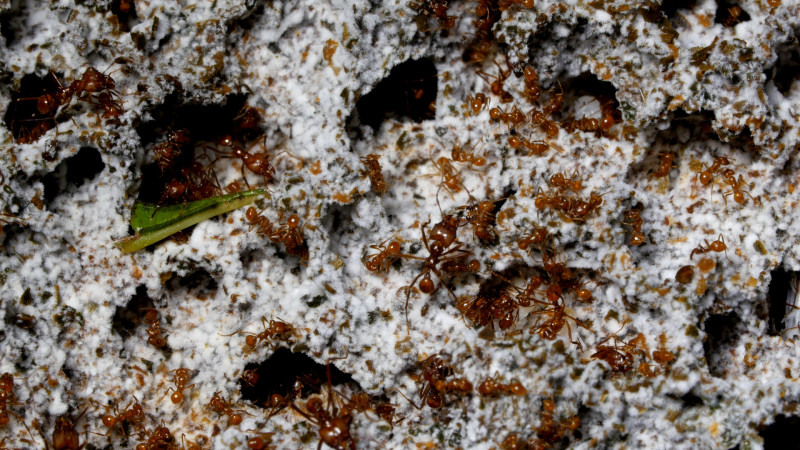
“They have many ways of making a living,” said Fisher.
For humans, farming was the origin of civilization. And it’s the same for ants. They’re fungus tycoons. Their colonies are true underground cities, some the size of a room.
Having a reliable source of food has given them the ability to specialize. Leafcutters have the most complex division of labor of any ants. Colonies, which are all female, include tiny worker ants, large worker ants and half-inch-long soldiers with huge heads that protect the colony from other ant species that survive by stealing leafcutters’ larvae.
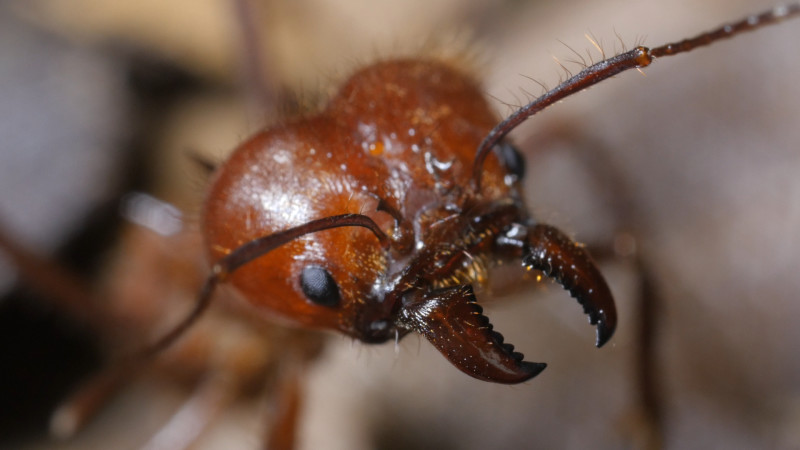
Farming has made leafcutters especially good at making a living. When it comes to agriculture, the ants make humans look like newbies. While humans started farming about 12,000 years ago, ants have been doing it for 60 million years. Humans have plows and shovels, while leafcutters use their mandibles to cut through leaves with incredible speed, leaving telltale crescent shapes.
Then the ants haul the leaf pieces through fields or forests to their underground nests. For a human, this feat would be the equivalent of carrying more than 600 pounds between our teeth.
Once they’re back in their nests, ants clean the leaves, crush them, cut them into little pieces and arrange them carefully in stacks. They even compost the leaves by squirting them with a few drops of fecal liquid. Enzymes from the fungus they eat pass through the ants’ digestive system and into their feces, which then help break down the leaf pieces to make them easier for the fungus to feed on.
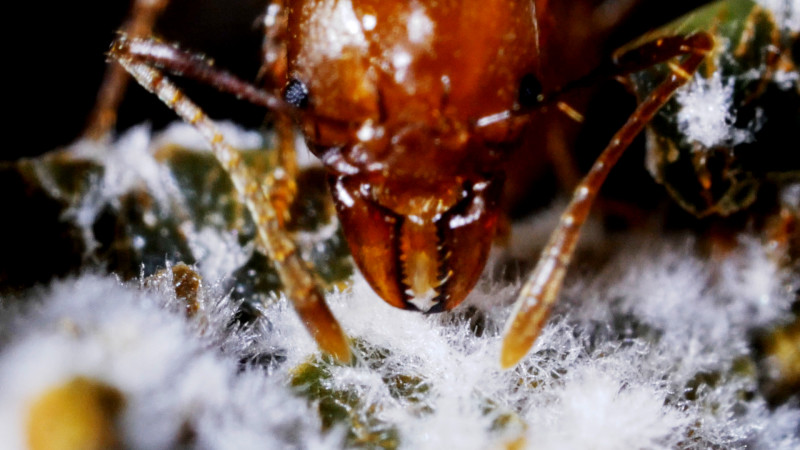
The next step in the farming process is for the ants to spread fungus spores around, much like a human farmer would sow seeds. Once the fungus starts to grow, ants preen it to keep it free from bacteria and other fungi. They also protect the fungus by covering it with bacteria they carry on their own bodies.
“Ants produce bacteria on little patches on their body,” said Fisher. “They produce the chemical that they need.”
In order to keep their fungus farms going, leafcutters need a steady supply of leaves and petals. This is why from Texas to South America leafcutters are considered agricultural pests. Working stealthily at night, they can strip an entire tree of its best leaves in just hours. While they’re pests to farmers, they also perform an essential environmental function in the tropics, by building up the soil in the rainforest.
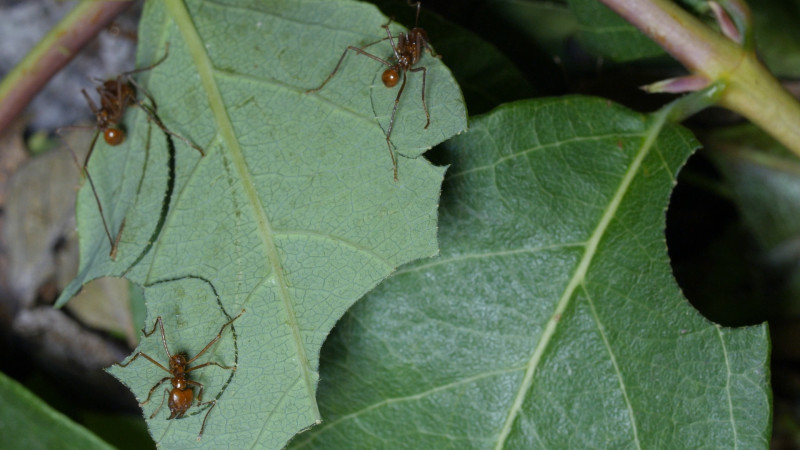
Visitors to the Cal Academy will likely be able to appreciate leafcutters’ farming abilities a little better when the exhibit has been improved. The timeline for the changes hasn’t been decided yet, said Natoli. But one thing is sure not to change: Visitors won’t be able to see the queen. She lives in a box in the back area of the Academy, cared for by Natoli herself, who refers to her with the respect one might develop for a three-quarter-inch-long ant.
“I call her The queen,” said Natoli.
Back in Trinidad, the queen started up the colony. She brought with her a bit of fungus from her parent colony, stored in a pouch, as well as sperm that she collected during a frenzied mating fly-out. She continues to reproduce during the life of her colony, and when she dies, after 10 to 20 years, the hard-working colony starts to die out too.
To see leafcutter ants in the San Francisco Bay Area, you can also visit the Oakland Zoo.